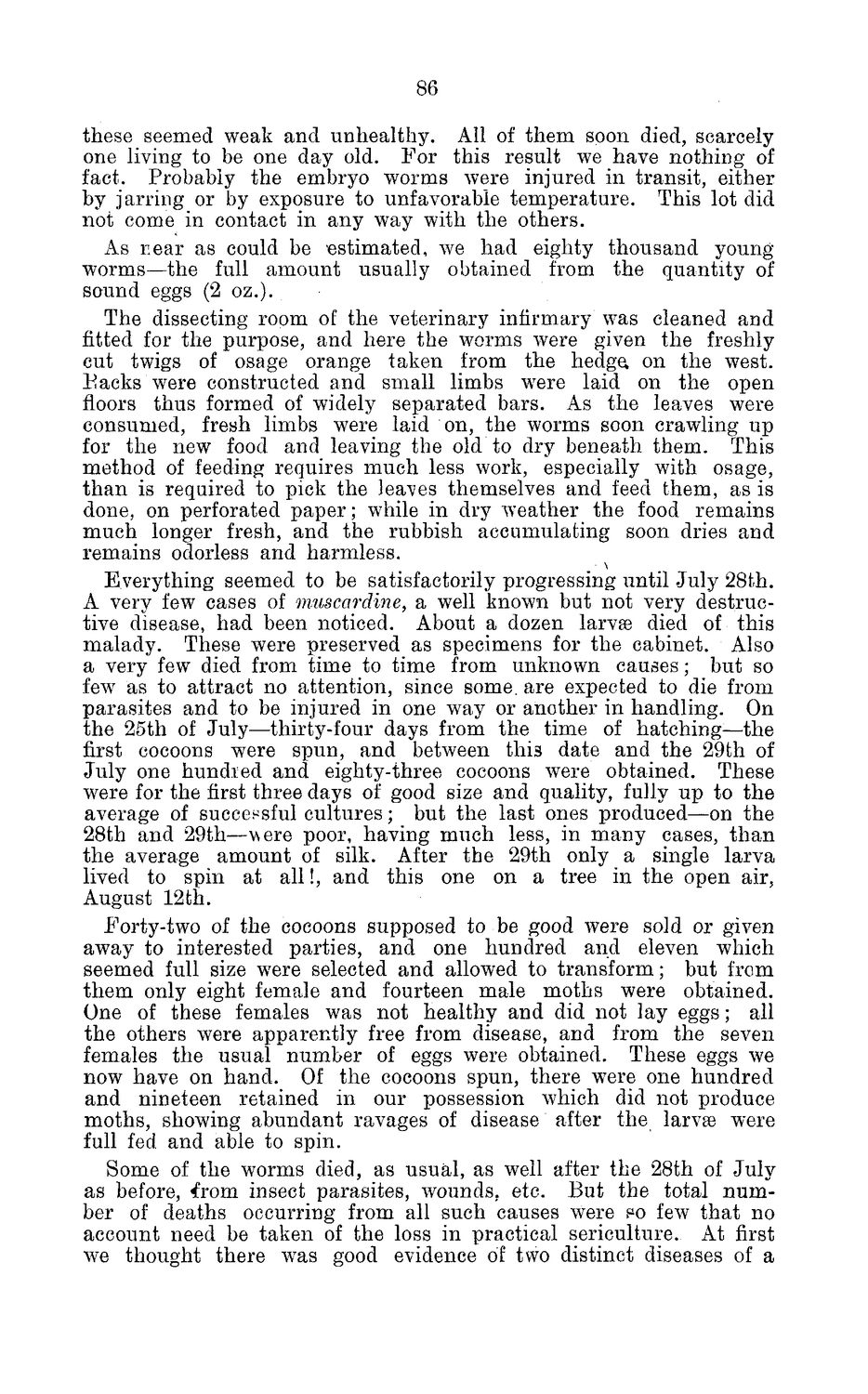| |
| |
Caption: Board of Trustees Minutes - 1884
This is a reduced-resolution page image for fast online browsing.

EXTRACTED TEXT FROM PAGE:
86 these seemed weak and unhealthy. All of them soon died, scarcely one living to be one day old. For this result we have nothing of fact. Probably the embryo worms were injured in transit, either by jarring or by exposure to unfavorable temperature. This lot did not come in contact in any way with the others. As near as could be estimated, we had eighty thousand youngworms—the full amount usually obtained from the quantity of sound eggs (2 oz.). The dissecting room of the veterinary infirmary was cleaned and fitted for the purpose, and here the worms were given the freshly cut twigs of osage orange taken from the hedge, on the west. Backs were constructed and small limbs w7ere laid on the open floors thus formed of widely separated bars. As the leaves were consumed, fresh limbs were laid on, the worms soon crawling up for the new food and leaving the old to dry beneath them. This method of feeding requires much less work, especially with osage, than is required to pick the leases themselves and feed them, as is done, on perforated paper; wrhile in dry wTeather the food remains much longer fresh, and the rubbish accumulating soon dries and remains odorless and harmless. Everything seemed to be satisfactorily progressing until July 28th. A very few cases of muscardine, a well known but not very destructive disease, had been noticed. About a dozen larvae died of this malady. These were preserved as specimens for the cabinet. Also a very few died from time to time from unknown causes; but so few as to attract no attention, since some, are expected to die from parasites and to be injured in one way or another in handling. On the 25th of July—thirty-four days from the time of hatching—the first cocoons were spun, and between this date and the 29th of July one hundied and eighty-three cocoons were obtained. These were for the first three days of good size and quality, fully up to the average of successful cultures; but the last ones produced—on the 28th and 29th—were poor, having much less, in many cases, than the average amount of silk. After the 29th only a single larva lived to spin at all!, and this one on a tree in the open air, August 12fch. Forty-two of the cocoons supposed to be good were sold or given away to interested parties, and one hundred and eleven which seemed full size w7ere selected and allowed to transform; but from them only eight female and fourteen male moths were obtained. One of these females was not healthy and did not lay eggs; all the others were apparently free from disease, and from the seven females the usual number of eggs were obtained. These eggs we now have on hand. Of the cocoons spun, there were one hundred and nineteen retained in our possession which did not produce moths, showing abundant ravages of disease after the larvae were full fed and able to spin. Some of the worms died, as usual, as well after the 28th of July as before, from insect parasites, wounds, etc. But the total number of deaths occurring from all such causes were so few that no account need be taken of the loss in practical sericulture. At first we thought there wTas good evidence of two distinct diseases of a
| |